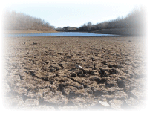Recent Water Resource and Drought Activities in Colorado
October 9, 2008
 |
It was a busy two weeks for researcher partners from NOAA's Earth System Research Laboratory (ESRL), the National Integrated Drought Information System (NIDIS), the Cooperative Institute for Research in Environmental Sciences (CIRES), and the Western Water Assessment (WWA). NIDIS and ESRL hosted the Colorado River Pilot Scoping Workshop, Oct 1-2, 2008 at NOAA Boulder. The aim of the workshop was to discuss the design and implementation of a drought early warning system for the Upper Colorado River Basin. By including a broad range of relevant stakeholders, the workshop built upon existing activities to identify partnerships and teams needed for a successful pilot and a sustained early warning information system.
ESRL, CIRES, and WWA researchers participated in the Governor's Conference on Managing Drought and Climate Risk, October 8-10, 2008 in Denver, CO. This conference aimed to help water providers, planners, managers, and agency and local government officials assess drought risk, impacts, and preparedness in Colorado and the improvements that may be needed for management under different conditions such as climate change. Conference goals were to share information and experience on drought preparedness and planning strategies, to announce plans for a comprehensive State Drought Plan, and to identify pathways for adaptation to the impacts of climate change and demands on water resources in the State.
In conjunction with the Governor's drought conference, the Colorado Water Conservation Board released a report on October 6, 2008 entitled, Colorado Climate Change: A Synthesis To Support Water Resource Management and Adaptation. This report was created by PSL, WWA, and Colorado State University researchers on behalf of the Board, and assesses the most reliable data available on temperature, precipitation, snowmelt, and runoff for Colorado and its rivers. The report indicates that Colorado's temperature rose 2°F over the past 30 years. Over the entire western United States, about 1°F of observed warming has likely been caused by the buildup of carbon dioxide and other heat-trapping gases in the atmosphere. Computer models project Colorado could warm another 4°F by mid-century.
With growing changes in demands on limited water resources, state and local governments must try to assess and understand a wide spectrum of information in order to make water management decisions.
By providing scientific information and resources on drought and climate change, NOAA helps inform decision-makers in order to reduce damaging environmental, societal, and economic impacts of drought.
| Contact: | More Information: |